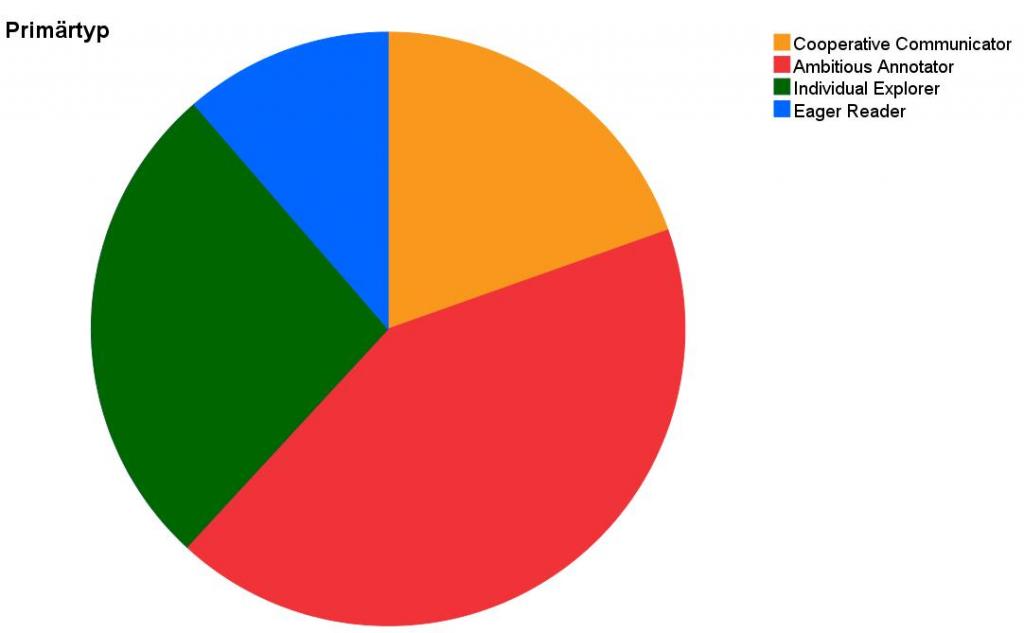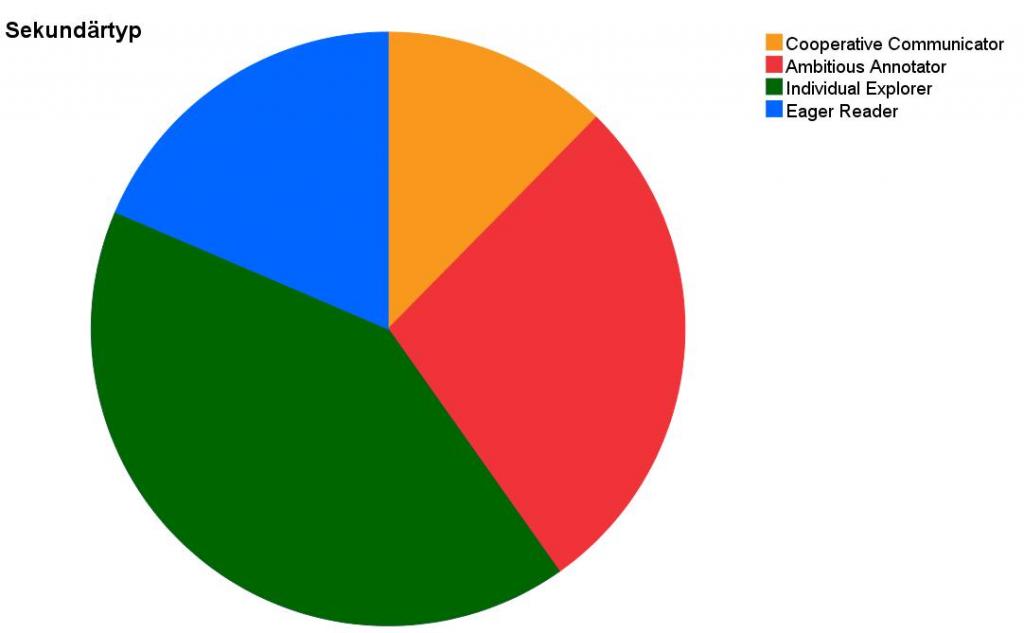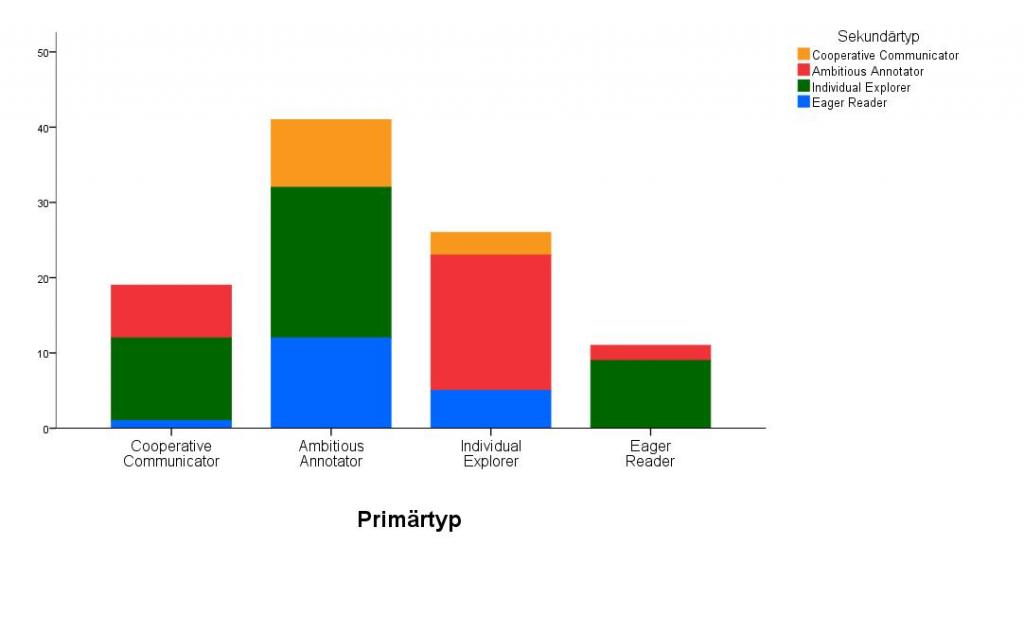 Submitted by Anki on
Submitted by Anki on
Shortly after the start of the semester we want to present you some statistics! Remember the test you had to take before you could use SHRIMP? On the basis of these questions we wanted to find out what type of learner you are in order to customize SHRIMP according to your personal learning needs. Now we have evaluated the test results and determined the exact distribution of learning types in your seminar – interesting to find out how your fellow students prefer to learn, isn't it? (In our last blog entry we introduced and explained our four different learning types - Communicator, Annotator, Explorer and Reader - in a little more detail.)
As you may have noticed, you always had to check two answers for one question while taking the test. We wanted to find out which primary and which secondary learning type you are. In that way, we wanted to individualize your results even more, because when it comes to learning behavior and preferences you shouldn't put anyone in just one category – just like in life generally! In our point of view, the students do not only learn according to one scheme but use different strategies and have different preferences.
So, how frequently do the learning types occur among the 97 students from the cohort? Among the primary types, the "annotator" clearly wins, followed by the "explorer." Less frequent are "communicators" or "readers."

The distribution of the secondary types is relatively similar, but here „explorer“ gets the first place, followed by "annotator," "reader," and "communicator."

To summarize, "annotator" and "explorer" are the most common categories for both primary and secondary types, followed by "communicator" and "reader." Now it would also be interesting to know which combinations of learning types (primary types combined with secondary types) occur most frequently. Here are the results:

As you can see, the primary types "communicator." "annotator," and "reader“ most frequently have the secondary type "explorer." So among all primary types except "explorer" itself, "explorer" ist he most frequent secondary type. Interesting!
Of course, we can't tell you who of your fellow students has which primary and secondary type. The evaluation of the data took place anonymously and so the interaction data of the students can not be attributed to their identity. Our primary aim is to reflect your and the cohort's data and thus create an additional benefit for your learning.